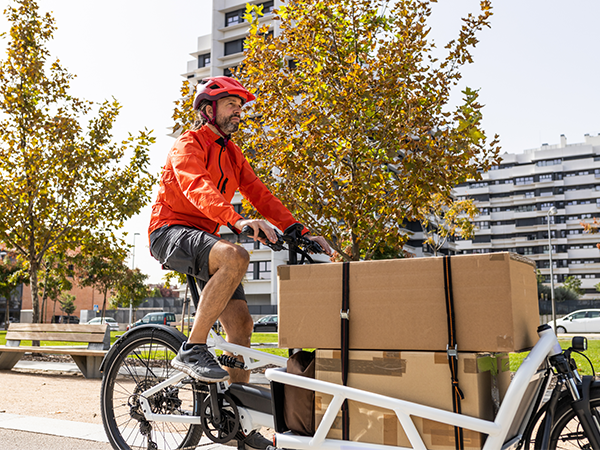Norwegian customers want and are willing to pay for environmentally friendly home delivery, but not if the price or delivery time increase.
These are some of the major findings in a new report from the Institute of Transport Economics.
The increasing trend of online shopping in Norway has resulted in a growing demand for delivery services – both home delivery and at pick-up points. Delivery is a major source of greenhouse gas emissions and environmental impact in the value chain of online shopping. Measures that can reduce the environmental impact of delivery by using more efficient delivery methods such as consolidated deliveries, pick-up points, energy-efficient vehicles, and eco-friendly packaging are available. However, the success of these initiatives depends on consumer acceptance and willingness to pay for environmentally friendly delivery options.

In the report that documents consumers` willingness to pay for environmentally friendly last-mile distribution of goods purchased online, researchers find that price and flexibility are the most important delivery criteria for consumers. When it comes to willingness to pay, instant home delivery (within a few hours) scores the highest. Over 50 percent of the sample prefer the cheapest delivery option, while only 4 percent prefer the environmentally friendly option. However, many, especially young people and women, are concerned about the environment.
Willingness to pay for environmentally friendly delivery solutions
The report emphasizes the questions about which delivery options are
preferred when shopping online, and the willingness to pay for various delivery services. Customers do want environmentally friendly delivery solutions and are willing to pay for these. If willingness to pay is considered a consumer benefit, many consumers will choose environmentally friendly delivery, but only if it is not urgent to receive the goods and delivery does not come at the expense of an acceptable delivery time and price. The average willingness to pay for environmentally friendly transport with zero-emission vehicles is between 70 and 75 Norwegian kroner.
One way to interpret willingness to pay is as a utility, and further that consumers have a value of distribution solutions that are environmentally friendly and a theoretical willingness to pay for this. With this approach the researchers are expecting customers to choose environmentally friendly distribution when it is offered without or at low extra costs and is not exceeded by other, more attractive solutions such as free home delivery within a few hours. Several measures that can stimulate consumers to choose environmentally friendly deliveries are discussed, but the most important tool seems to be that the consumer at checkout has the opportunity to choose environmentally friendly
and attractive delivery solutions that do not cost too much or result in
unreasonably long delivery times or are delivered to unattractive locations.
A well-thought-out and environmentally friendly default solution that meets the expectations connected to price, time and flexibility in the relevant market can be a good and attractive measure to get consumers to choose more environmentally friendly. Some consumers might even be willing to pay for such services.
Text: Hanne Sparre-Enger Communications Leader at the Institute of Transport Research – TØI
Read a summary of the report: Consumer willingsness to pay for environmentally friendly distriburion "PDF"

Chief Research Economist
Hovi, Inger Beate ibh@toi.no






Follow us: